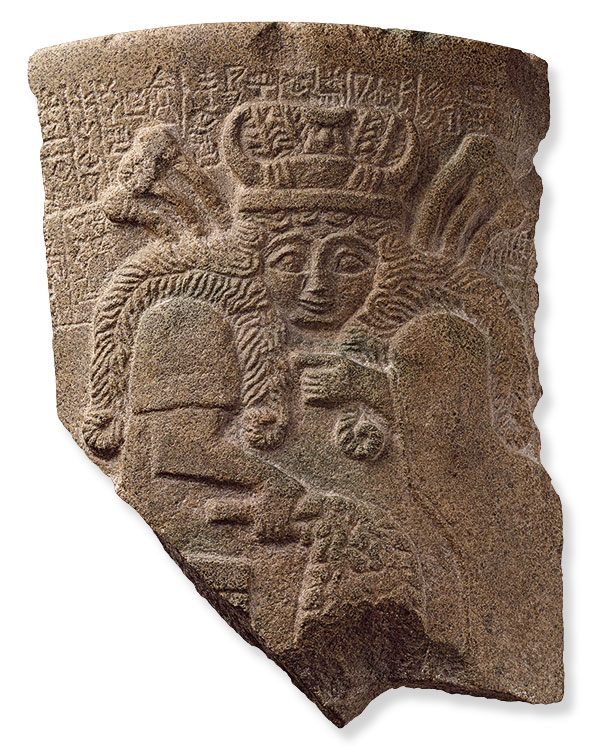
This vessel fragment shows one of the first images of an anthropomorphic goddess created in Mesopotamia. The divine nature of the figure is expressed by the horned crown with feathers (or fronds) and an animal head, as well as by the vegetal elements above her shoulders, possibly identifying her as Nisaba, Ninhursag, or Inanna. While the lower half of the goddess’s seated body is shown in profile, her head and torso face forward. She stares directly at the viewer, exuding her power and authority. Her hair and the cluster of dates in her right hand depict the figure as a goddess of fertility and abundance. The inscription mentions the vase itself, called bur-sag̃ in Sumerian and dedicated to this female deity.
Fragment of a vessel with frontal image of goddess
Mesopotamia, Sumerian
Early Dynastic IIIb period, ca. 2400 BC
Cuneiform inscription in Sumerian
Basalt
Staatliche Museen Zu Berlin, Vorderasiatisches Museum, Acquired 1914–15; VA 07248
© Staatliche Museen zu Berlin-Vorderasiatisches Museum. Foto: Olaf M. Teßmer.
Sidney Babcock: Prior to the Early Dynastic period, gods and goddesses were represented by various symbols. The presence of the goddess Inanna, for example, was signaled with reed ring bundles or rosettes. This practice shifted around 2400 BC when deities began to be visualized as anthropomorphic figures, which is demonstrated by this vessel fragment. Likely part of a cup, the piece bears a powerful image of a vegetation or fertility goddess holding a cluster of dates and with vegetal elements above her shoulders. She is seated in profile while her upper body is depicted frontally—her gaze direct. Interestingly, the corners of her mouth are lifted into a smile. The horned crown that marks her as divine rests on top of her long, voluminous, braided hair that curls at the ends. Akkadian artists later appropriated iconographical features of this goddess, such as her mixed profile position, coiffure, and the form of the six elements above her shoulders, to portray Ishtar, the Akkadian counterpart of Inanna, and her martial characteristics.
